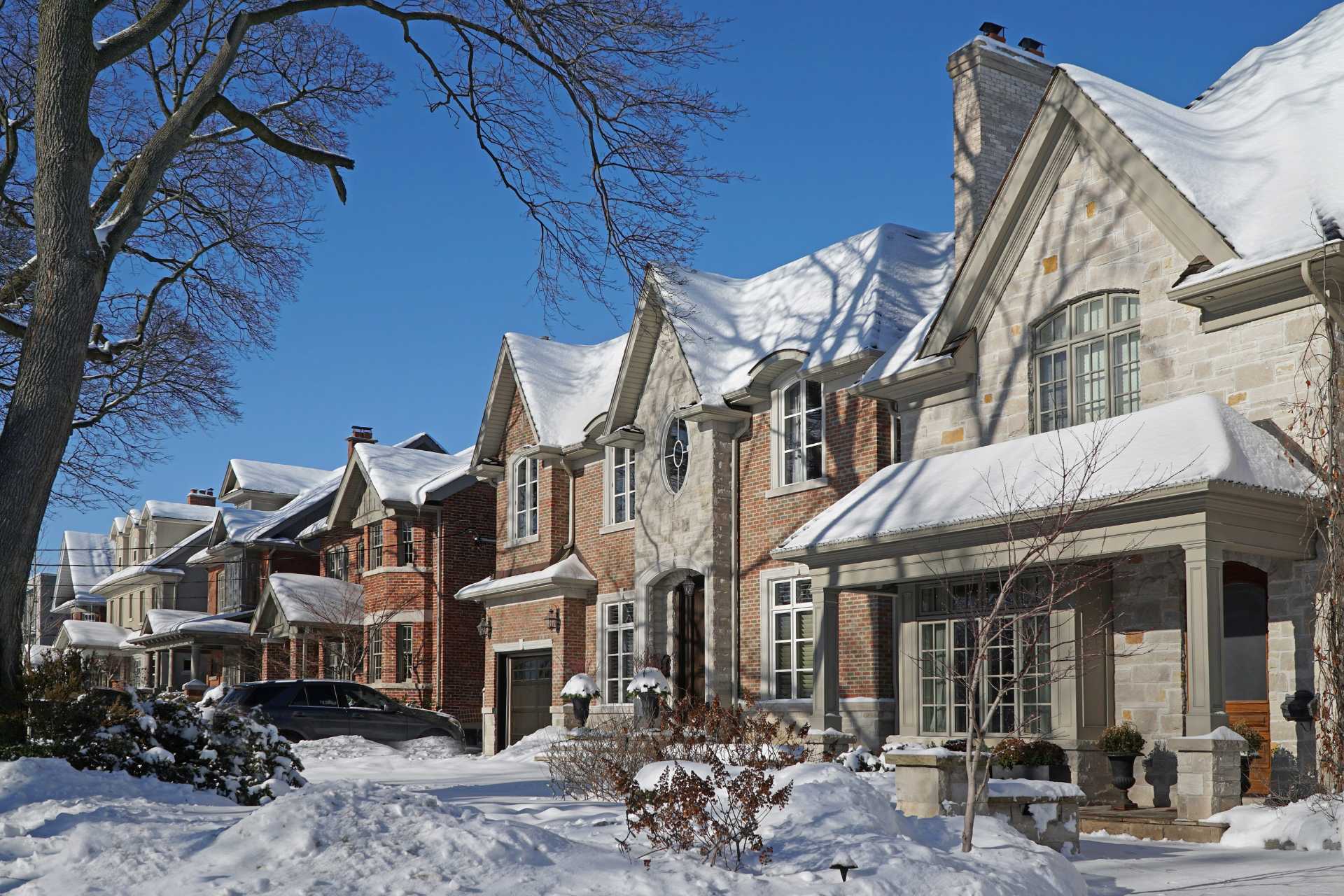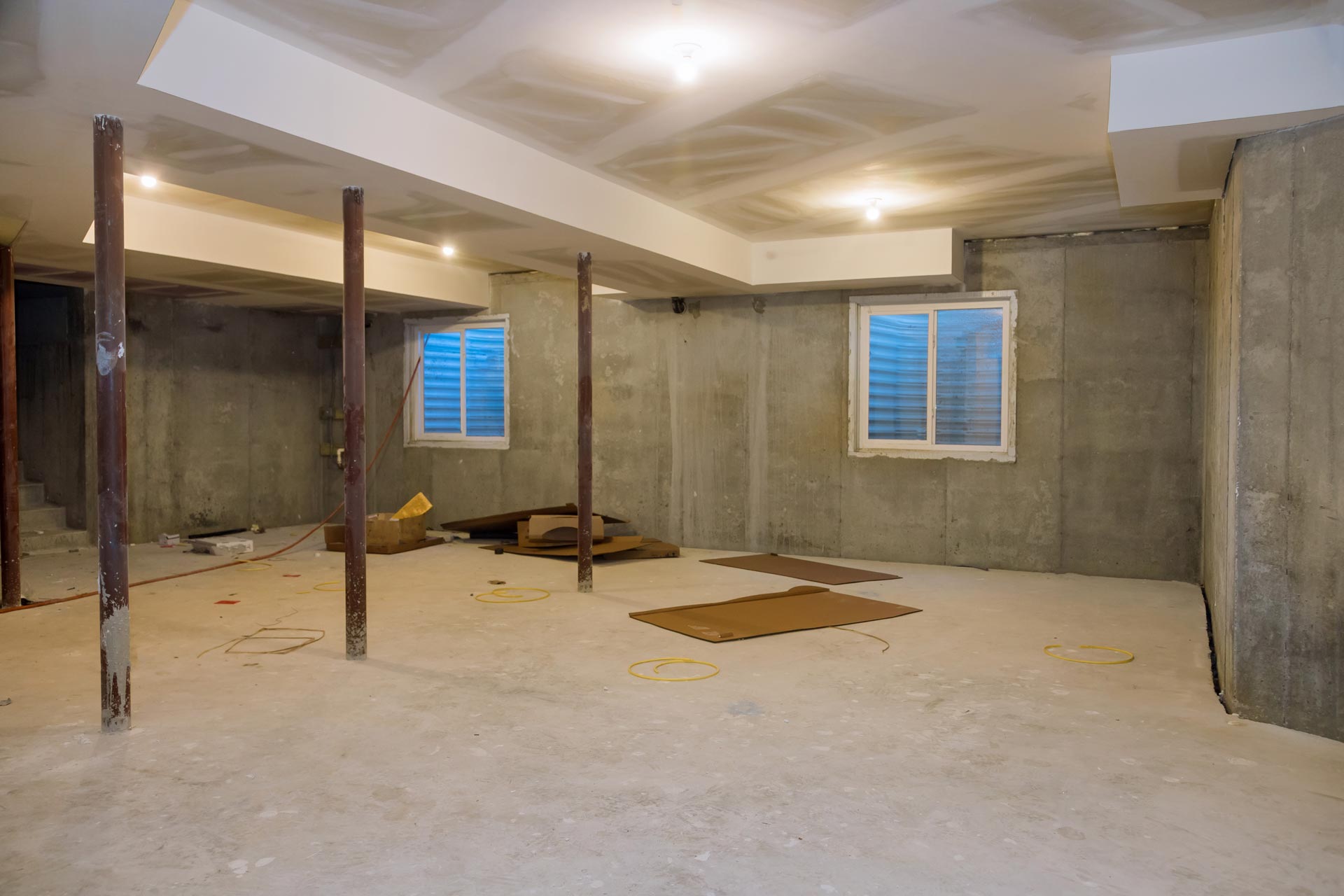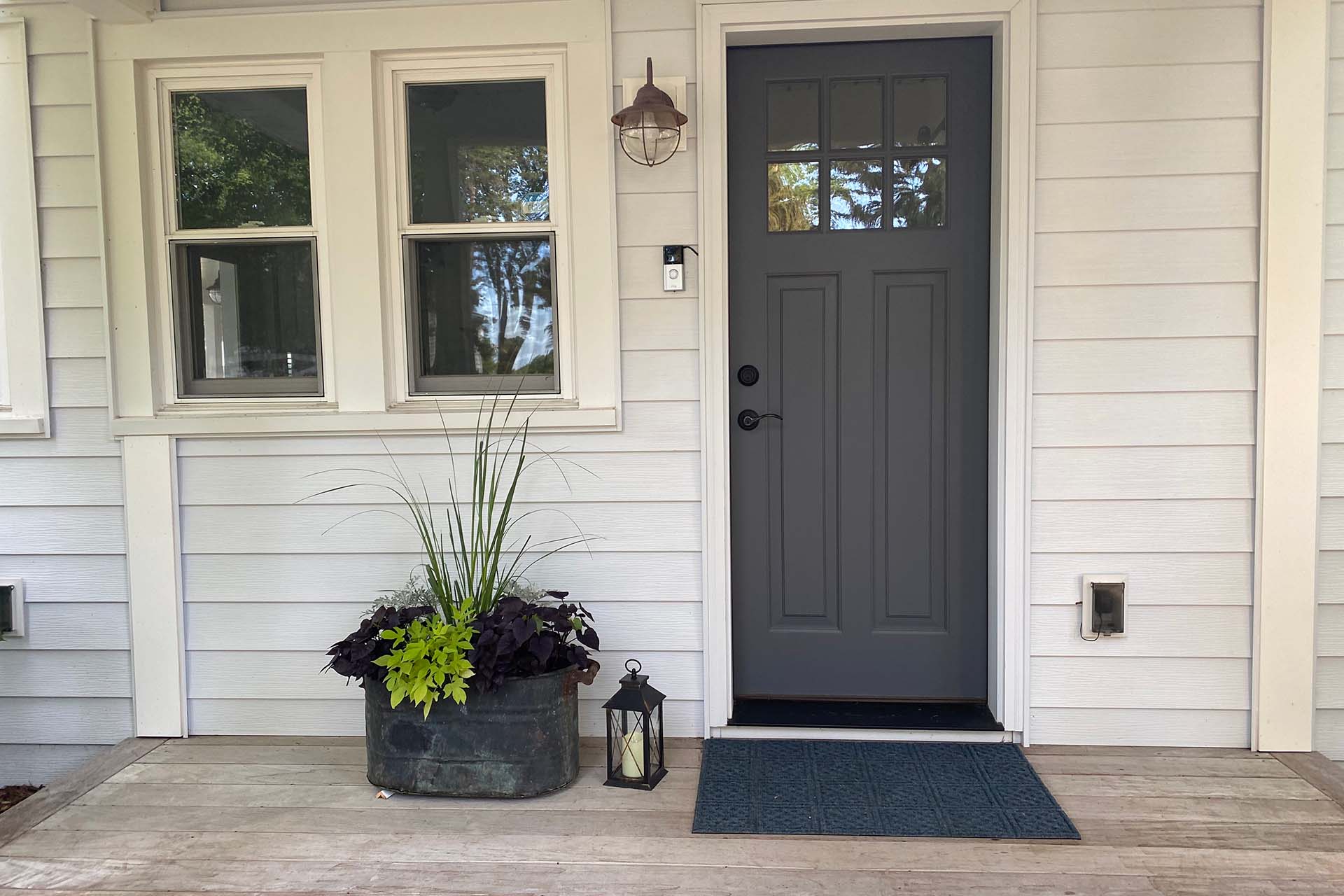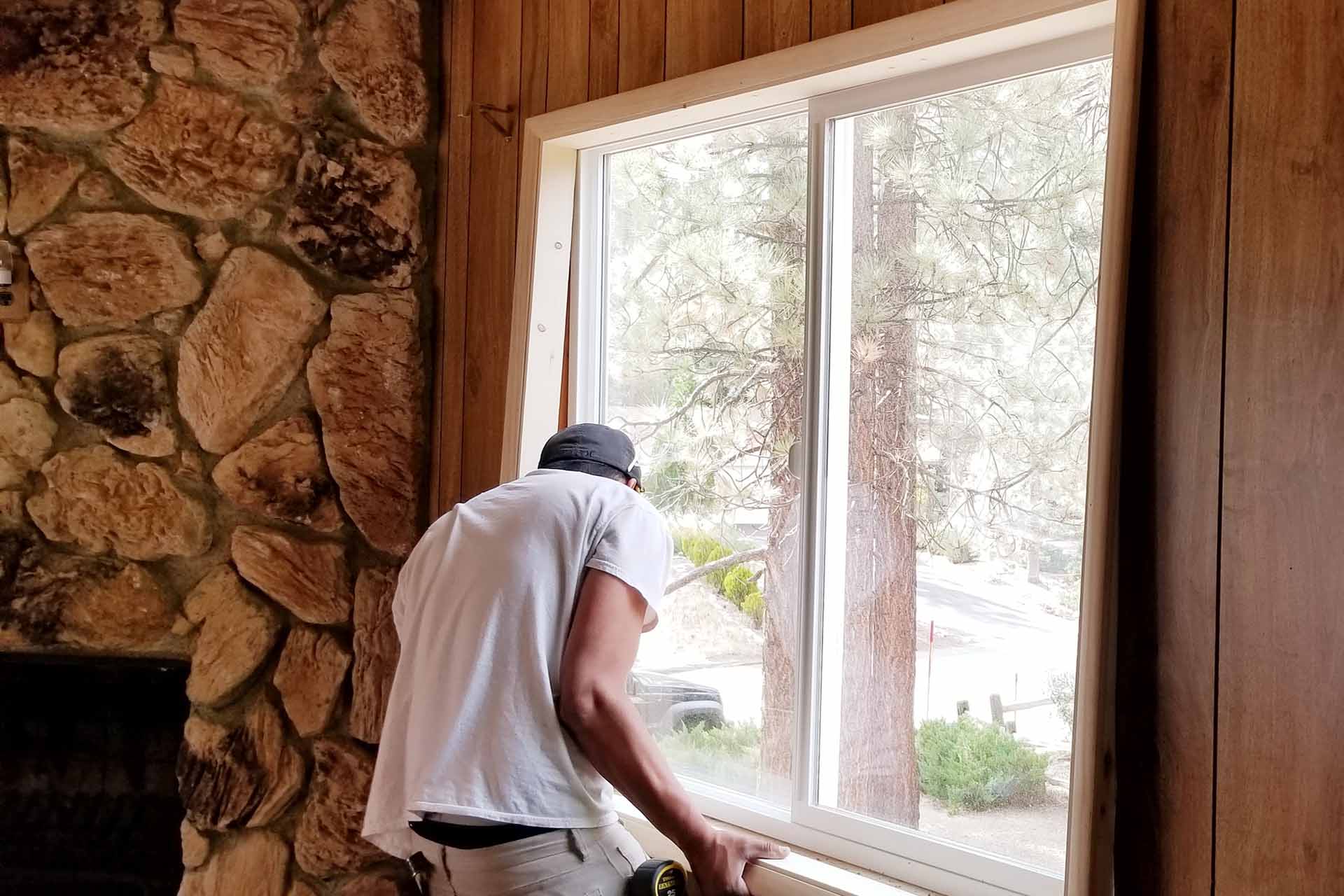5 Tips For Protecting Your Home From Freezing Temperatures (and Keep Your Family Cozy)
Canada's Winter season is wonderful, with beautiful white snow paired with nice, cold weather conditions. However, with that being said, the winter season increases the likelihood of freezing temperatures and other severe weather that are not comfortable and can harm a person's living space. Neglecting your property throughout the winter can have serious repercussions, such as pipe break or roof damage. These types of damages are hard to fix during the winter time, as it can potentially be damaged again due to the weather conditions. Having said that, here are five suggestions to help you keep your house safe and cosy while protecting it from the cold weather.
1. Insulate Your Home
A critical first step in defending your property against the damaging impacts of frigid weather is insulation. Insulation serves as a barrier, preventing heat from escaping from your home and preventing heat gain. Insulating your home will protect it from the destructive impacts of frigid temperatures while also increasing its energy efficiency. Sealing any air leaks should be one of your home's main insulation priorities. These can be found near windows, doors, and electrical outlets and cause considerable heat loss. You may stop these air leaks and lessen the amount of heat that escapes from your house by applying weather stripping or caulking. This not only increases the energy efficiency of your home but also helps to keep it warm and cosy throughout the colder months. Making sure that your walls and attic are adequately insulated is another crucial part of insulating your house. Heat rises, and if the attic is not appropriately insulated, heat can escape through the roof. This makes attic insulation extremely crucial. Your home's overall energy efficiency may be increased by decreasing heat loss by installing more insulation to the attic. Insulating your home not only makes it more energy-efficient but also prevents your pipes from freezing. In cold weather, pipes are prone to freezing, which can cause them to break and seriously harm your property. Your house will stay secure and functioning if you insulate your pipes to keep them from freezing and causing damage. And lastly, insulating your house might aid in lowering your heating expenses. You may minimise your energy costs and reduce monthly spending by retaining heat in your house and minimising heat loss. This helps to increase the cost-effectiveness of your house while also making it cosier and more inviting to live in.
2. Maintain Your Heating System
As a homeowner, you wouldn't want your heating system to fail on one of the coldest days of the year during the severe winter months. Maintaining your heating system and making sure it's in excellent operating condition are essential if you want to keep your house from freezing in the winter. Failure to do so might result in expensive repairs and perhaps more serious harm to your house. Having your heating system regularly maintained is one of the best methods to shield your home from frigid weather. A professional should do a complete examination as part of this so they can look for wear and tear and make any repairs that are required. This can assist you in preventing any failures and ensuring that your system is operating properly and efficiently. Making sure the heating system is operating at its best is a crucial component of heating system maintenance, as well. This involves checking for any air leaks in the ductwork, changing or cleaning the air filters, and making sure the system is suited correctly for your house. Your heating system will consume more energy if it is not operating at its most effective level, which might lead to greater heating costs and more system wear and tear. Additionally, it's crucial to examine the security components of your heating system, such as the carbon monoxide and fire alarms. In an emergency, these characteristics can assist to keep you and your family safe and avert any possible catastrophes. Finally, it's critical to take fast action if you detect any indications that your heating system needs repair, such odd noises, elevated energy bills, or inconsistent heating. Ignoring them may eventually lead to more serious damage and more expensive repairs.
3. Protect your Pipes
It is crucial to make sure that your pipes are protected from freezing temperatures as winter approaches. Your home might sustain serious harm from frozen pipes, including floods and broken pipes. You must take the appropriate precautions to safeguard your pipes from the cold weather in order to avoid such disastrous disasters. Insulating your pipes is one of the best methods to safeguard them. This entails wrapping the pipes with materials that will trap the heat, such as foam, fibreglass, or other materials. Pipes are less prone to freeze because insulation helps to maintain the internal temperature. Additionally, insulated pipes will lessen the amount of heat lost, resulting in a home that uses less energy. Maintaining the warmth of your pipes is another crucial safeguard. You may do this by keeping the heat on while you are away from home. You may also let warm air flow around the pipes by opening the cupboards and doors under the sink. Keep the vents open if you have a crawl space so that air may flow through. Keeping your pipes from being exposed to severely cold temperatures is also vital. For instance, pipes in unheated spaces like basements, attics, or garages are more prone to freezing. You can attach heating tapes or cables around the pipes to avoid this. These appliances create heat using energy, which keeps the pipes from freezing.
4. Keep Your Roof Clear
Throughout the winter, it is crucial to take precautions to safeguard your property from the elements, particularly cold temperatures. The roof should receive special attention since it protects your house from the cold and snow. Snow and ice buildup on your roof can contribute to house damage prevention, increased energy efficiency, and peace of mind. Maintaining a clean roof has several advantages, but one of the most important is that it stops ice dams from forming. When snow on the roof melts and then refreezes, it forms an obstruction known as an ice dam that stops water from draining off the roof. Water can leak through the roof when the snow and ice build up, harming the structure, insulation, and ceilings. By routinely clearing snow and ice from your roof, you may lessen the chance that ice dams will form and your property will sustain damage. Better energy efficiency is an advantage of maintaining a clean roof. Your roof's accumulation of snow and ice acts as an insulating barrier, trapping heat inside your house. Your heating system may have to work more to maintain a comfortable temperature as a result, increasing your energy expenses and lowering its efficiency. You may lessen the amount of heat that is trapped inside your home and increase the effectiveness of your heating system by maintaining a clean roof. Furthermore, the ultimate benefit of maintaining a clean roof during the winter is peace of mind. You'll feel more confident to handle the chilly winter weather knowing that your roof is shielded from the conditions that come with the season. Your home will stay secure and protected throughout the winter if you regularly remove snow and ice from your roof. You can also further reassure your home’s security by investing in a metal roofing system.
5. Create an Emergency Kit
As winter approaches in full force, it is crucial to be ready for any crises that can occur. Making an emergency pack that will keep you and your house safe during the winter is one approach to do this. An emergency kit that is well-stocked may provide you peace of mind and guarantee that you are ready to tackle any catastrophe that may happen. Making an emergency kit is important for a variety of reasons, but one of the main ones is to have access to supplies in case of power outages. Widespread power outages that might persist for several hours or even days can be brought on by winter weather conditions like a lot of snow and ice. Having a well-stocked emergency kit can provide you access to the non-perishable food, water, flashlights, and additional batteries you'll need to live. Being ready for winter weather is a key factor in the decision to put together an emergency pack. Road closures, travel delays, and hazardous driving conditions can all be brought on by winter storms. When a winter storm is approaching, having an emergency kit with supplies like a shovel, warm clothes, and road salt will help you and your house stay safe and secure. A first aid kit should be included in your emergency pack as well. Having a first aid kit on hand will help you respond swiftly to any situations that may arise since winter weather conditions might result in an increase in accidents and injuries. Basic first aid materials including bandages, gauze, and painkillers should be included in this pack.
Although Canada’s winter season is an enjoyable time of the year, it does come with harsh weather conditions that can potentially damage your home. There are many ways that you can protect your home from freezing weather, and they include insulating your home, maintaining your heating system, protecting your pipes, keeping your roof clear and creating an emergency kit. By making sure that you do these actions routinely, you are reassuring that you, your family and your home will all be safe during this winter season.
Exterior Vs Interior Basement Waterproofing: Which One To Choose
Water from the surrounding soil seeps into your basement through cracks and pores in the walls. Concrete walls, in particular, are porous, allowing water to soak through and cause a wet basement, necessitating basement waterproofing. Furthermore, if you reside in a location prone to high rains, snowstorms, or heavy snow melt, the likelihood of water seepage in your basement rises. When water seeps into your home's internal rooms through the foundation, it can cause substantial damage. Unless you move quickly and begin waterproofing basement walls from the outside or inside, the damage can have a negative impact on the structural integrity and value of your property. To prevent basement water flooding, homeowners can take quick precautionary measures. You should put in enough time and effort to ensure that the house is practically ideal. However, determining the best option for you, such as whether to waterproof the basement wall from the inside or outside, might be difficult. You should also consider hiring a professional business to complete the task. You must consider the facts about basement waterproofing interior versus exterior solutions before deciding which is best for your property.
Interior Basement Waterproofing
Interior basement waterproofing refers to the process of waterproofing basement walls from the inside. Water that seeps into the basement is rerouted this way before it may enter, exit, or leave your property. It is an effective waterproofing solution that is far less obnoxious than outside waterproofing. The inside basement waterproofing system regulates water by quickly draining groundwater before it reaches your floor. It entails the use of interior sealers as well as drainage systems. Interior drainage systems are made up of pipes and drains that are put under the foundation to collect excess groundwater or to capture leaks. Excess water is directed to a big basin known as a sump pit, which gathers water and empties it away from your property through a sump pump. Investing in inner basement wall waterproofing can lessen the chance of water flooding in your basement. These drainage systems are simple to install and often less expensive than outside waterproofing.
Exterior Basement Waterproofing
Exterior basement waterproofing is also a very efficient way to keep water out of your property. Most problems with moist basements are caused by the outside environment. As a result, it is vital to examine the basement's exterior and consider waterproofing basement walls from the outside. Excavation of the soil surrounding your house's foundation is required for an external basement waterproofing system. Because the earth surrounding the home is constantly soaked, it swells and exerts pressure on the foundation, causing it to move and break. The groundwater then seeps into your home through the crevices. However, outdoor basement waterproofing is a time-consuming process that necessitates the use of many tools and machines. To prevent water seepage, a polymer-based waterproof sealant is sprayed to the outer walls of your basement after digging the dirt surrounding the home's foundation.
Differences between the Two Waterproofing
Where it’s installed
The first and most visible distinction is that, as the name implies, external waterproofing is typically performed from outside the basement. This necessitates excavation along the perimeter of the basement. Meanwhile, the majority of the interior waterproofing installation work is done from within the basement.
Sump Pump
Another distinction is that for internal waterproofing, a sump pump system is nearly always required. This is done to prevent water from accumulating inside the weeping tile network. Only if the weeping tile network is linked to a storm sewer would a sump pump be unnecessary. Meanwhile, the demand for a sump pump for outside waterproofing would be determined by the property's specific requirements. Furthermore, if a sump pump is to be utilised for outside waterproofing, it may be installed outside because the exterior waterproofing weeping tile network is also located outside. The sump pump is not required for external waterproofing to keep water out, but it is an excellent technique to keep excess water from collecting around the waterproofed foundation.
Absence of Leakage
Finally, the third major distinction is that external waterproofing is intended to totally keep water out. This implies that once the external waterproofing is installed, water will not be able to reach the basement wall. Meanwhile, inside waterproofing will not totally prevent water from penetrating the wall. However, internal waterproofing will keep the basement dry by strategically using the waterproof membrane and weeping tiles.
Now that the differences between the two waterproofing methods have been, the information below will talk about the factors to consider when deciding between the two.
Factors to Consider
Excavation Area Around Your Basement
This is the most important issue to consider since external waterproofing requires excavation space around your property's base. As a result, inside waterproofing is the obvious best solution for houses that don't have adequate excavation area or none at all.
Moisture Protection
Both waterproofing technologies may be configured to keep the basement dry and free of puddles and leaks. This is accomplished differently for external vs interior waterproofing technologies. The waterproof membrane is installed on the outside of the foundation for exterior waterproofing, which means that water cannot touch the foundation wall. This is used with a matching weeping tile system to regulate soil moisture. A trench and weeping tile network are installed at the foot of the leaking basement walls for internal waterproofing. This network captures leaks that occur through basement walls, and the water is evacuated by a sump pump. Furthermore, a waterproof membrane is laid on the inside surface of the leaking walls to function as a vapour barrier in addition to all of this. We can see from this setting that even with inside waterproofing, water may still infiltrate through the basement walls. However, everything is well-managed and protected by the barrier.
Intended Use
In regard to the preceding point, depending on the function of the basement, some homeowners may prefer outside waterproofing over inside waterproofing. Exterior waterproofing is better for basements that are meant to be long-term living quarters, such as bedrooms, home offices, or rentable spaces. Exterior waterproofing, on the other hand, keeps the area "drier" and does not rely on a running sump pump to accomplish so.
Invasiveness
Exterior waterproofing is considered a less intrusive method of waterproofing because of how this type of waterproofing system is constructed, which is primarily from the outside of the basement. In contrast, inside waterproofing necessitates the digging of tiny trenches from within. This implies that inside basement waterproofing may necessitate clearing out the basement prior to installation. If less invasiveness is important to you, outside waterproofing is the preferable alternative.
Longevity
Exterior waterproofing, on average, lasts longer without maintenance than inside waterproofing. This is mostly due to the fact that interior waterproofing nearly usually relies on a sump pump to keep the area dry. However, in some circumstances, internal waterproofing can be linked to a storm sewer instead, eliminating the need for a sump pump. Furthermore, it is crucial to remember that the quality of the materials and the completeness of the installation both contribute to how long the waterproofing will endure.
Budget
Interior waterproofing is generally less expensive than outside waterproofing. However, this just takes into account the initial outlay. Exterior waterproofing may be worth the extra cost, given that it often requires little or no upkeep.
Waterproofing your basement may not be the most popular operation done to homes, but it is one of the most crucial out of the bunch. Waterproofing your basement has many benefits that can save you lots, in terms of time and money. There are two waterproofing methods and they include exterior waterproofing and interior waterproofing. Both are very good investments, there are many factors that could affect which one is best for your home. These factors include the excavation area of your basement, the moisture protection both waterproofing operations provide, the intended use for these waterproofing methods, the invasiveness of the project, the longevity of the waterproofing and your budget. If you are having any troubles with deciding which is best for you, it is best that you contact your local, trusted contractor who specialises in basement waterproofing today.
How To Choose An Entry Door To Match Your Home Style
There are various design possibilities and different types of door material for external doors to pick from for any home's architectural style, whether you choose a front door for a classic home or a more modern one. Eventually, you will discover something to your liking, from doors with curved tops to classic forms. You need to make sure the door you pick fits properly and complements the style and the interior design of your home. Choosing a new external door design may be a tedious process since, aside from the expenses involved, the door you select can affect the beauty of your home, its value and the security of your family. So, here are some tips on how to choose an entry door to match your home’s style.
Home’s Architectural Style
Every house has its own distinct curb appeal. They all have their own stylish look that influences the placement and looks of furniture, windows, and doors. Whatever door you pick for your home, you need to make sure it compliments the interior design and style of your home. Modern homes typically feature glass ceilings and beautiful windows, which will complement sleek and unusual front door types. Traditional homes, on the other hand, appear best when combined with a door that has beautiful decor and vintage touches. The doors and windows you pick should always reflect your home's stylistic statement. You cannot mix and match these windows and doors with your home because if you do, they will seem out of place and have a detrimental influence on the overall beauty of your home.
Purpose of Entry Door
Exterior doors are normally constructed to perform a variety of functions depending on the requirements. When selecting an external door style, homeowners should consider the door's purpose. For instance, if you are looking for a door that matches your home’s vintage aesthetic and also provides security, a traditional wood panelled door is an option that you must consider. If you are looking for something that is sleek and simple, but also provides privacy, it is recommended to purchase a frosted glass door. Regardless of what it may be, thinking about your new entry door’s purpose will help you come closer to finding the perfect option.
Try Different Colours
Finding external doors that fit the design of the inside of your living area and the colour of your outside walls is one of the most fundamental things to consider when shopping for a new front door. After considering the aesthetics of your property, you must choose the colour combination and colour tones for your door that best compliments your home. Selecting the right colours can simply boost your home’s attractiveness by producing a unified appearance. However, while a burst of colour may enliven a home, vivid hues can sometimes hinder your home's attractiveness, so be sure to do thorough research before you make any decisions. Furthermore, people frequently pick two distinct colours for their doors — one for the trimmings and one for the windows. With that being said, it would be best to create multiple palettes of colours that would work with each other if combined, so that you have multiple options to choose from.
Think About The Sun
A door that lets in too much light can be a problem and may annoy you and your family. Doors that obstruct natural light, on the other hand, can make a home appear dreary and gloomy on the inside. The position of the sun is vital to consider when deciding what door type is ideal for your property because the right door will ensure that your home receives the appropriate amount of sunshine while fitting your living area's aesthetic. For instance, if your home is facing directly towards the sun, a glass door may not be the best option because these doors will not block any of the sunlight that will be coming in. However, if your home is the opposite and receives little sunlight, a glass door may be the right choice.
Like any other part of your home’s exterior, your front door affects the overall aesthetic of your living area. When looking for an entry door to match your home’s looks, you must think about your home’s architectural style, the purpose that the door will serve, the different colours that could potentially match your living area and the position of the sun. All of these factors are just as important as the other, so taking them all into account will lead to a successful search for a new front door.
5 Tips for Planning Your Exterior Home Improvement Project
Planning and executing exterior home improvement projects, whether it's a window replacement, roof repair, or upgrading siding, can feel overwhelming. With so many factors to consider—such as choosing the right materials, hiring the best contractors, and managing timelines—it’s easy to get lost in the details. To help you navigate the process, here are five tips to ensure your project runs smoothly.
1. Consider the Weather When Planning
Timing is everything for exterior repairs and upgrades. The months between spring and fall are ideal for projects because weather conditions are more predictable. For example, if you’re installing a new roof, experts recommend working in temperatures of 45 degrees or higher to prevent issues like moisture problems. Keep these seasonal factors in mind when planning, as attempting repairs in colder months can impact both the quality of materials and the efficiency of the work.
2. Choose an Experienced Installer
Selecting the right contractor is one of the most important decisions you’ll make. A reputable installer can make all the difference in ensuring your project’s success. Look for companies with proven expertise and glowing reviews rather than simply choosing the cheapest option. Asking the questions to ask a contractor, such as their experience with similar projects and their warranty policies, will help you feel confident in your choice.
3. Hire a Project Manager to Stay on Track
Managing a large renovation can quickly become overwhelming. That’s where a professional project manager can be invaluable. They’ll coordinate vendors and subcontractors, ensure deadlines are met, and help you budget a project properly. A skilled project manager keeps everything running smoothly, saving you time, stress, and unexpected expenses.
4. Break Your Project into Stages
Renovating your entire home at once can be costly and time-consuming. Instead, tackle your project in manageable stages. For instance, you can focus on one section of your home this year and move on to another the next. This approach keeps your budget flexible and allows you to spread out expenses over time, making the process less overwhelming.
5. Start with Doors, Windows, and Siding
When prioritizing projects, starting with your doors, windows, and siding is a smart choice. A window replacement, for example, not only improves energy efficiency but also enhances your home’s curb appeal and increases its value. Updating these elements can have an immediate impact, both aesthetically and financially, while setting a strong foundation for the rest of your home improvements.




